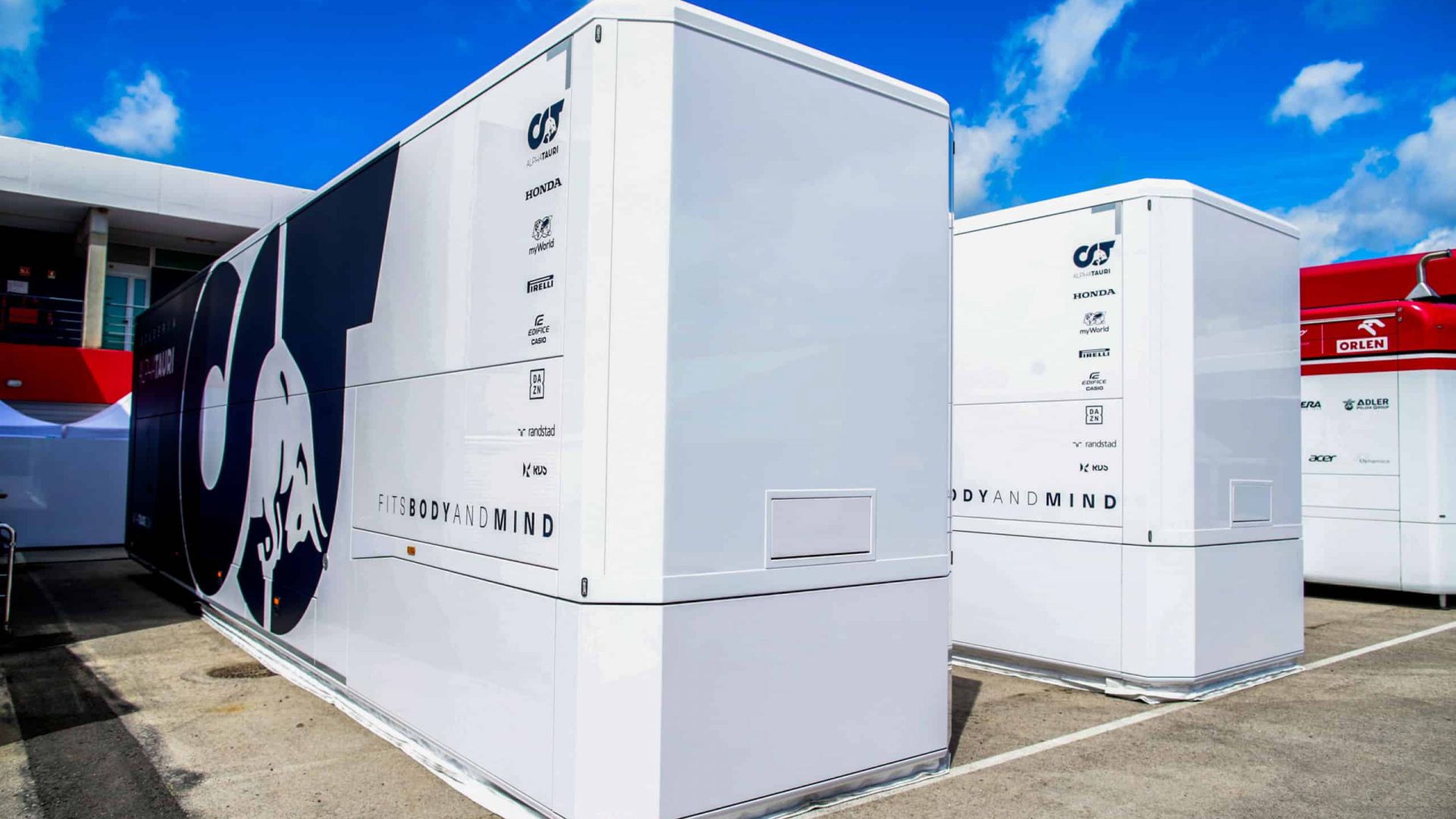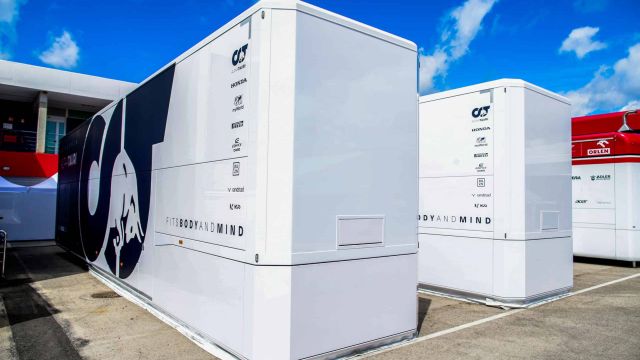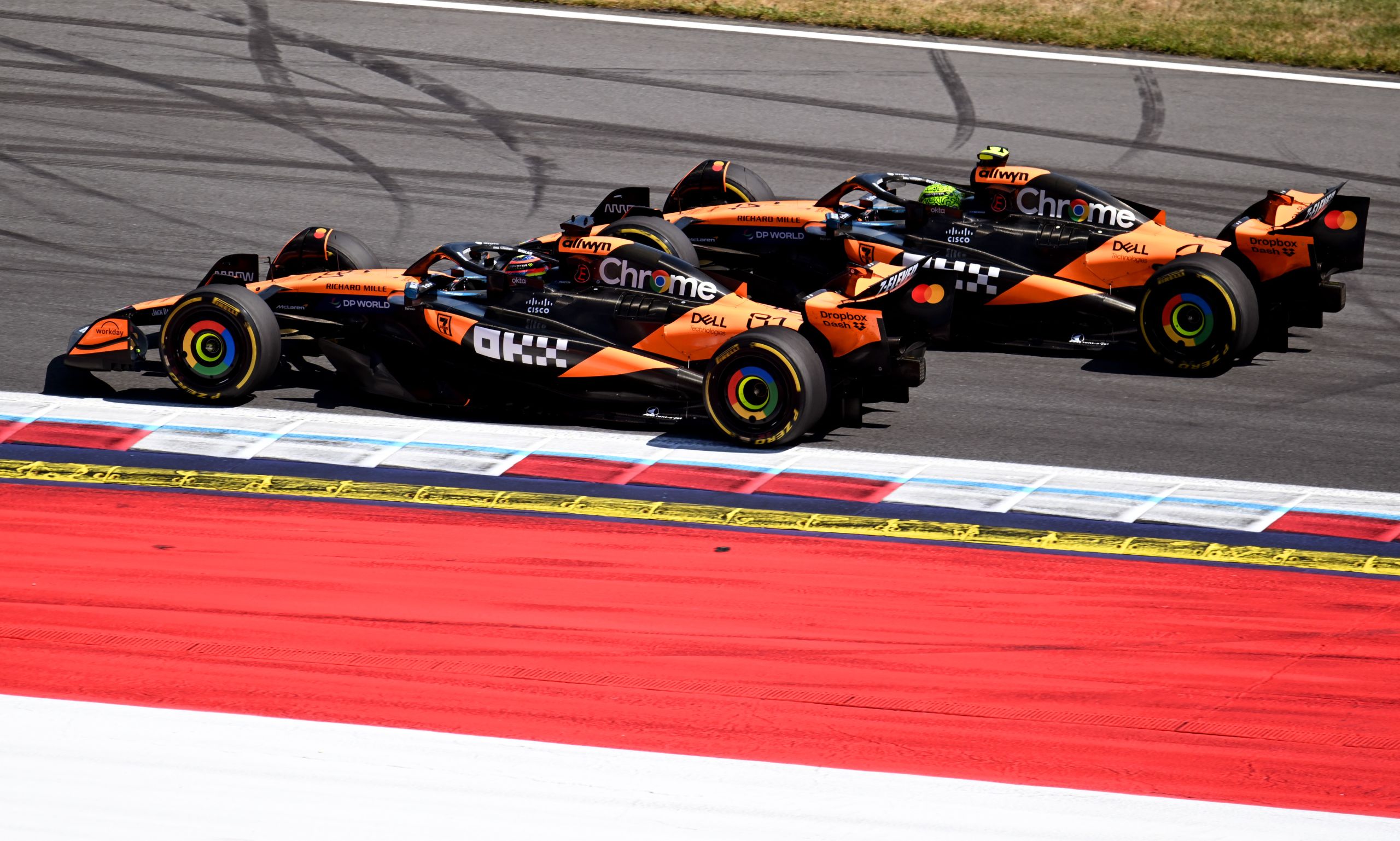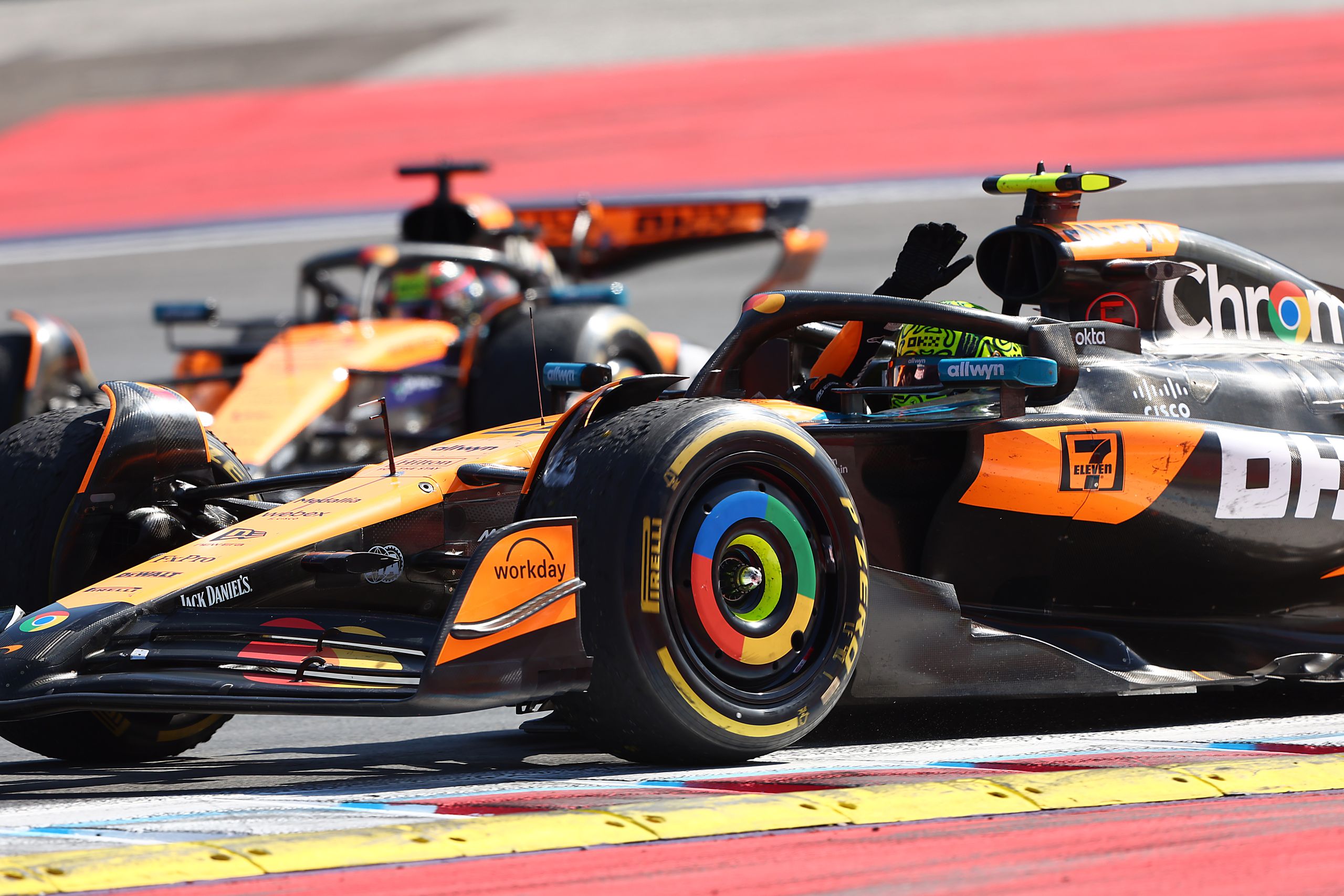How Formula 1 Cars Are Transported


The moving of the F1 circus from one venue to another, and in particular how Formula 1 cars are transported, is like a military operation and is conducted like one. The F1 cars, engines, parts, cables, communication equipment, spares and personnel have to reach the next venue in time. A single error could cost the team a race and probably the whole campaign. Shifting teams, F1 cars and equipment is a well-planned exercise that has to be repeated for every event. It involves transportation by air, ships and roads. Nothing is left to chance. If the races are one week apart, the team has three days to get all their equipment to the next venue and get it ready to go.
A look at the costs incurred in F1 logistics will give a good idea of what moving teams along with the cars is like. In 2020 it was estimated that each team spent $8 million dollars on logistics. The 2020 F1 season was a curtailed season because of the pandemic and had fewer races, and the costs of transportation have increased dramatically due to post-pandemic inflation. With the increased number of venues, the teams are expected to spend $10 million on logistics each. That is a whopping $100 million spent on logistics!
The whole operation is planned much beforehand. A review of the logistical plan is conducted on Thursday morning and approved by the team management. The whole dismantling and packing plan is laid out before any event at the venue starts. Every crew member plays his or her role in the dismantling and packing of the equipment. The drivers and mechanics will supervise the packing of the F1 cars and the engines. Very often, racing venues are cleared on all signs of the event within ten hours of the Grand Prix.
How do F1 teams move between venues?
Teams use different modes of transport to move equipment and personnel between venues depending on the distance between them. The key to logistics as with any operation is to keep costs down. The second consideration is given to the time available to move the circus. But the efficiency of the exercise is not compromised on any cost or constraint. Teams use road transport wherever possible. If the distance between the venues is large, teams opt for air or sea transport.
Transportation by road
Within Europe, the teams prefer to travel by road and make their own arrangements. Road transportation, though cheaper, can be tricky because of the time schedule. Bad weather and major accidents can play havoc with the schedule of the trucks. That is because more than 300 truckloads of equipment is moved between venues. If put ended to end the line would extend for a distance of more than 5 kilometres. For venues in Northern Europe like Russia and Azerbaijan, road transportation is neither economical nor feasible. So teams opt for air travel.
Transportation by sea
Transportation by sea is the cheapest and the most eco-friendly mode of transporting equipment. But cargo ships take time to cross the seas and the oceans. Equipment is transported by sea if the time between the races permits. Delicate and important equipment is transported air or road to most venues. Sea or Oceanic transport is opted for in the case of Intercontinental travel.
The packaging of different equipment is done at different times depending on their need during the racing weekend. Certain non-critical equipment can be packed at the end of the first day of the racing weekends. Spare engines are packed either on the race day morning or immediately following the qualifying rounds. That is because if an engine fails during the race, it is not feasible to change the engine. That also goes for spare gearboxes and power units. The garage set-up is one of the last items to be packed but has to be among the first to arrive at the next venue.
Transportation by air
Air and sea transportation is handled by DHL, the official logistics partner of the FIA. The teams hand over their packed containers to DHL and expect them to be delivered to the venue on time. DHL, in its many years of association with F1 and the FIA, has never let the teams down. Non-critical articles like tables, jacks, kitchen equipment and such, that are cheaper, are bought in multiples. These are packed in sets in multiple containers to be shipped or air freighted. These containers may even be designated as one for each continent wherever convenient.
Teams pack the containers and get them ready for transportation at the closest designation stipulated by the FIA and DHL. These containers are specially designed to fit perfectly in the cargo hold in designated places. The interior of the containers is also designed to fit equipment in designated places. The containers are padded with a soft material that keeps the equipment safe and intact during travel. The containers are loaded in chartered planes that deliver the cargo safely to the airport nearest to the venue. The containers are then transported by road to the venue.
Each team transports 7 tonnes of equipment from one venue to another. That amounts to a total of 80 tonnes of equipment moves between venues, including the material moved by the FIA. When moved by trucks, the Formula 1 teams may need as many as 300 trucks. When stood ended to end, the convoy could extend for up to 5 kilometres. DHL states that Formula 1 teams ship 660 tonnes by air and 500 tonnes by sea per season. Six or seven Boeings are chartered for moving Formula 1 cargo between distant venues.
How do F1 cars get transported?
Formula 1 cars is a delicate and very costly bit of equipment. It has to be handled, packaged and transported with great care. This article will discuss the packaging and transportation of F1 cars first. The rest of the paraphernalia, which is also critical for the event to go smoothly, will be approached later. If the time between two races permits, the cars will be flown back to the factory, Their suspensions, engines, gearboxes and power packs will be thoroughly checked. The chassis of the car will be repainted before being shipped to the next venue.
Formula 1 cars are modular in structure. They are assembled part by part and dismantled the same way. The front and the rear portion of the car is bolted together. While the nose of the car and the drivers cabin form one unit, the engine, power unit and the rear porting for another. The front and the rear portions of the car are designed to separate in the event of a severe crash protecting the driver. The driver is thus protected in case the engine catches fire. The whole car can be dismantled and packaged in a matter of a couple of hours.
F1 cars are dismantled as soon as the FIA officials have finished checking the cars for technical compliance this make take an hour after the chequered flag falls. The cars are dismantled by the team mechanics. The rearview mirrors, suspension, engine, gearbox and power units are housed in their foam boxes. The front and rear wings are also similarly packaged. Tools needed to maintain and repair the car often go along with the car. The foam boxes are designed to make optimal use of the space in the container. The car chassis is covered with a specially built protective cover.
The containers in which these parts of the car are packaged are specially built with a cushioned floor. This is to prevent sudden movements and vibrations to the parts of the car. The trailer that will carry this container is also air-cushioned. The boxes in which the parts are packaged are designed in such a manner as to fit in their allotted slot within the container. Once thus packaged, the containers are ready to be shipped to another venue by road, air or sea. Formula 1 cars are mostly transported by either road or air.
However, only Formula 1 cars alone do not a Grand Prix make! There is a need to shift and transport a whole lot of personnel, spares, tools and equipment between venues. The slightest glitch can disrupt the performance of the team at a venue. This slip could cost the team precious points or even the race affecting the outcome at the end of the season. That is why the shipping list and schedule is prepared weeks in advance and is reviewed every so often. The review considers the shortcomings encountered in the previous events and upgrades the lists and schedule.
What are the essentials for an F1 race weekend?
Critical personnel, equipment, spares, tools and furniture are needed by a team, besides the Formula 1 cars, for a successful performance at a racing weekend. The personnel and things will be needed on different days and times of the week starting preferably on Wednesday morning. In the case of back to back racing weekends the teams have to be especially careful. If an item is missed out, there is very little time for recovery and it spells immense trouble.
Which F1 personnel are essential on a racing weekend?
An F1 team employs hundreds of personnel through a season. A race team may have between 50 to 75 or more personnel. Besides them, there are media personnel and trainers that may need to be on site. Taking into account the factory teams that design and build the chassis, engines and other components, an F1 team employs anywhere between 800 to 1000 people. Of these employees, the race team are the critical personnel that need to reach a venue in time. They may include but are not limited to:
● Set-up crews
● Mechanics
● Engineers
● Drivers
● Strategists
● Strategists
● Senior Management teams
● Communication personnel
● Chefs and kitchen staff
The list is compiled in no particular order and is definitely not comprehensive. Different persons may be needed on different days. All the persons have to be present throughout all race days. All of the personnel use different modes of transport and routes to get to the venue. There is also a whole lot of equipment that needs to be shifted from one venue to another.
What equipment needs to be transported between F1 venues?
● Formula 1 Cars
● Pit garage set-up
● Mechanical equipment
● Tools
● IT equipment
● Chairs, tables and other hospitality equipment
● Motor homes and team bases
● Cooking equipment
● Food
This list is not comprehensive again and may include other items.
What does the FIA move between races?
The FIA, as the organiser of Formula 1, has to move its whole set up between races. They use the same modes of transportation as do most teams. The FIA inspects circuits at the venues for readiness weeks or even months before the racing weekend. They too prepare a transportation schedule well before the event. The schedule and the arrangements are reviewed periodically and changes are made according to any new developments.
The FIA has to transport many things. The most critical among them are:
● Formula 1 and FIA senior management
● Safety cars and medical cars
● Safety car and medical car operators
● Formula One media centre
● IT and Media equipment
● IT and Media operators
● Formula 1 motor homes for personnel
Of the equipment listed above, the motor homes for personnel are only moved around Grands Prix venues in Europe. Russia and Azerbaijan are too distant and uneconomical to drive to. Equipment and personnel to these venues are mostly transported by chartered and commercial planes.
How Formula 1 Cars Are Transported – Conclusion
Transporting Formula 1 cars, personnel and other equipment between venues is a meticulously planned exercise. It is also a well-rehearsed exercise as the teams have moved between 22 venues in 2021. There has been no incident in recent years when a team has missed out on a race due to transportation glitches. Nevertheless, it is a fascinating exercise conducted within three days in some cases. If a race is delayed because of adverse weather, the time available for a team to move and set up at the next venue is even shorter





